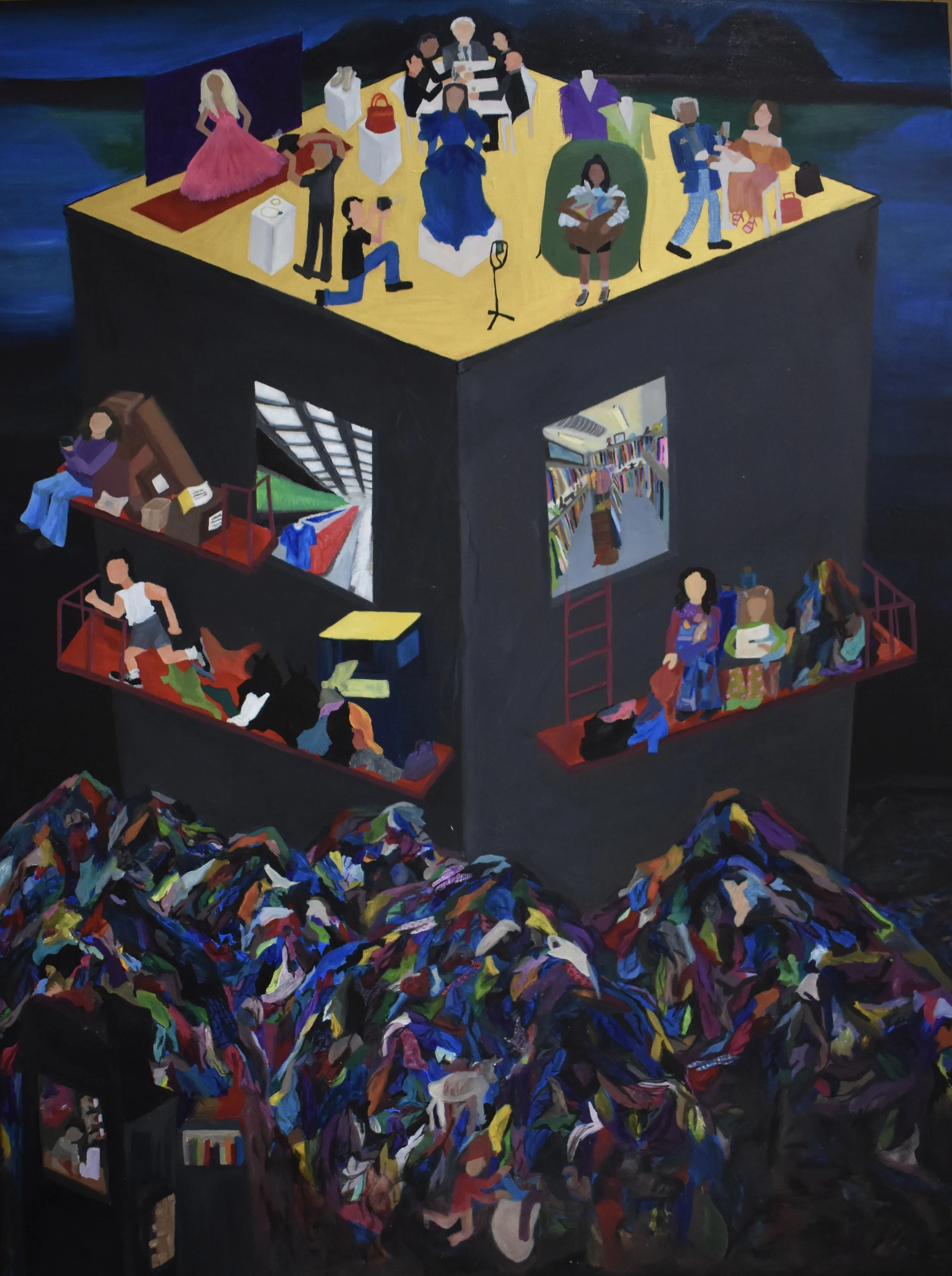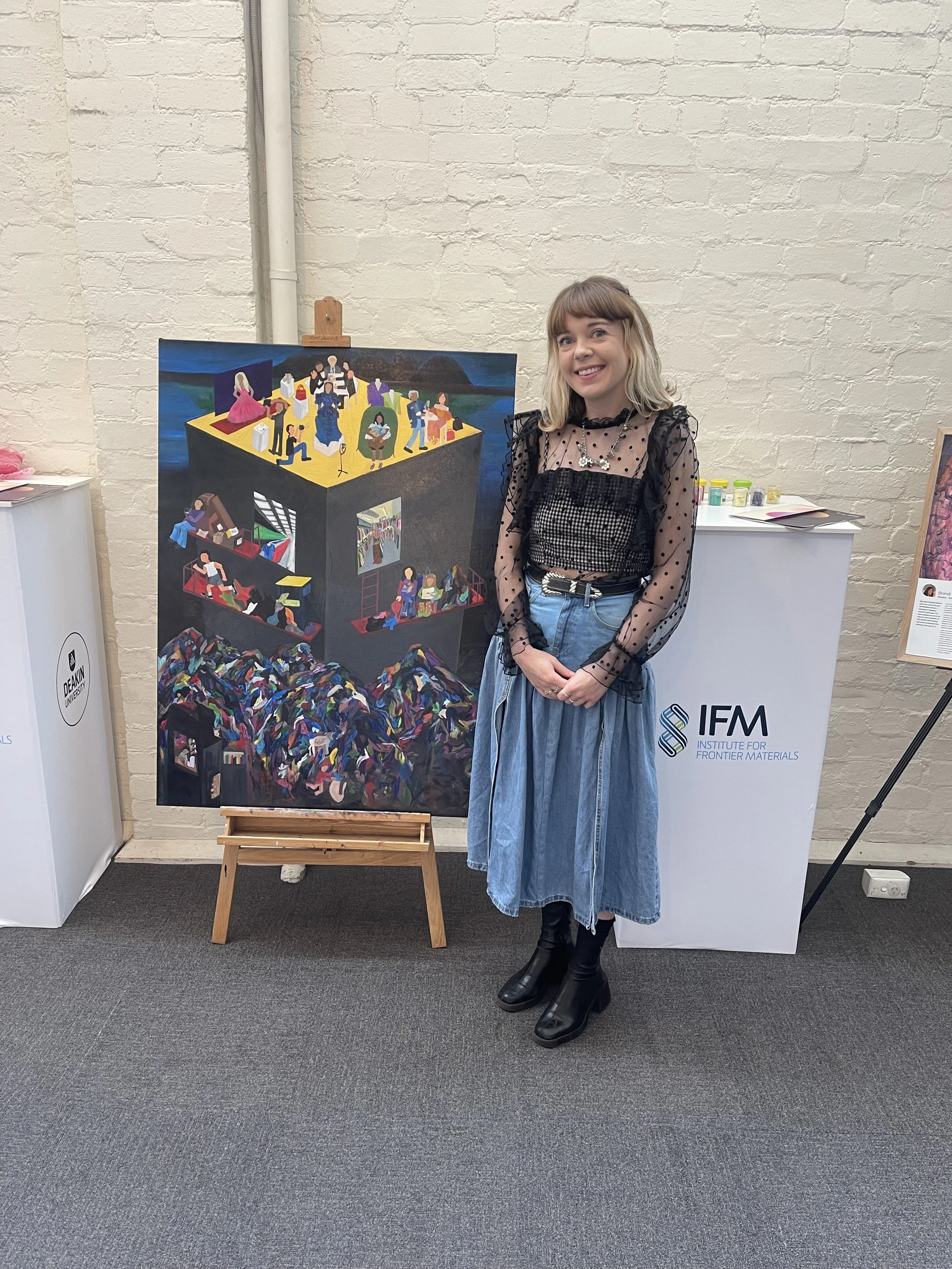Made with pigment from Deakin University -
"We've found that particles produced from textile waste segregated by colour could be used for a range of applications. This includes pigments for printing or colouring textiles, and which can also be used to create art," Associate Professor Rajkhowa said.
"Our simple but powerful approach could address the huge challenges of recycling textiles due to complexities of different colours, fibres and blends."
Using textile waste sourced through industry partner Textile Recyclers Australia - which receives unwanted clothing and textiles from households, retailers and industry - the Deakin research team grinds down the materials to produce a fine powder.
Woven waste
This artwork examines the deep divide within the fashion industry, drawing attention to the hidden costs of consumerism and the environmental toll of fast fashion.
At the bottom, vast heaps of discarded clothing and textile waste represent the overwhelming output of mass production. A lone figure scavenges for salvageable garments, while a mountain goat searches for food in the desolate landscape, illustrating the unnatural devastation caused by textile waste. To the left, manufacturing buildings loom, their windows revealing busy production lines, stacks of cargo boxes, and endless rolls of fabric—underscoring the relentless pace of mass manufacturing.
Moving upward, the right side of the structure shows figures creatively upcycling discarded materials into new pieces, offering a glimpse of sustainable practices in action. Above them, a thrift store brims with second-hand items, emphasizing the potential for renewal within the cycle of fashion. This section also highlights Deakin University’s reclaimed denim pigment, a nod to their Future Fibres Hub and its commitment to sustainable innovation.
On the left, a figure hastily flees from a pile of their own waste near an overflowing donation bin, while another adds items to an online shopping cart, surrounded by unopened packages. This contrast points to the rampant culture of overconsumption and the detachment from the waste left behind.
At the top, an influencer flaunts a fast fashion haul, while models pose and wealthy elites—business figures and socialites—sip champagne, seemingly disconnected from the realities below. In the distance, barely noticed by those at the top, mountains of waste rise in the background, with one set ablaze. This imagery invites a sense of discomfort, hinting at the controversial practices of luxury brands that destroy unsold stock at the end of each season, inviting the viewer to reflect on the consequences of unchecked consumption.
Through its layered composition, the artwork contrasts environmental devastation with emerging efforts for positive change, encouraging viewers to reconsider their relationship with fashion and the broader impact of their choices.



